This is a preprint.
Self-Organization of Sinusoidal Vessels in Pluripotent Stem Cell-derived Human Liver Bud Organoids
- PMID: 39005378
- PMCID: PMC11245015
- DOI: 10.1101/2024.07.02.601804
Self-Organization of Sinusoidal Vessels in Pluripotent Stem Cell-derived Human Liver Bud Organoids
Update in
-
Self-organization of sinusoidal vessels in pluripotent stem cell-derived human liver bud organoids.Nat Biomed Eng. 2025 Jun 25:10.1038/s41551-025-01416-6. doi: 10.1038/s41551-025-01416-6. Online ahead of print. Nat Biomed Eng. 2025. PMID: 40562862 Free PMC article.
Abstract
The induction of tissue-specific vessels in in vitro living tissue systems remains challenging. Here, we directly differentiated human pluripotent stem cells into CD32b+ putative liver sinusoidal progenitors (iLSEP) by dictating developmental pathways. By devising an inverted multilayered air-liquid interface (IMALI) culture, hepatic endoderm, septum mesenchyme, arterial and sinusoidal quadruple progenitors self-organized to generate and sustain hepatocyte-like cells neighbored by divergent endothelial subsets composed of CD32blowCD31high, LYVE1+STAB1+CD32bhighCD31lowTHBD-vWF-, and LYVE1-THBD+vWF+ cells. Wnt2 mediated sinusoidal-to-hepatic intercellular crosstalk potentiates hepatocyte differentiation and branched endothelial network formation. Intravital imaging revealed iLSEP developed fully patent human vessels with functional sinusoid-like features. Organoid-derived hepatocyte- and sinusoid-derived coagulation factors enabled correction of in vitro clotting time with Factor V, VIII, IX, and XI deficient patients' plasma and rescued the severe bleeding phenotype in hemophilia A mice upon transplantation. Advanced organoid vascularization technology allows for interrogating key insights governing organ-specific vessel development, paving the way for coagulation disorder therapeutics.
Figures

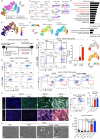
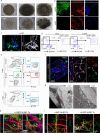



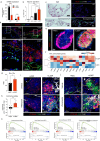
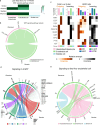
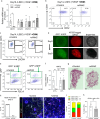
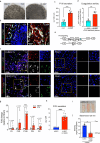
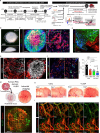



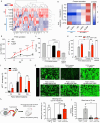

References
Publication types
Grants and funding
LinkOut - more resources
Full Text Sources
Molecular Biology Databases
Miscellaneous
